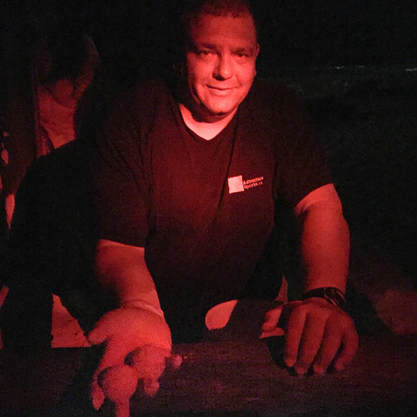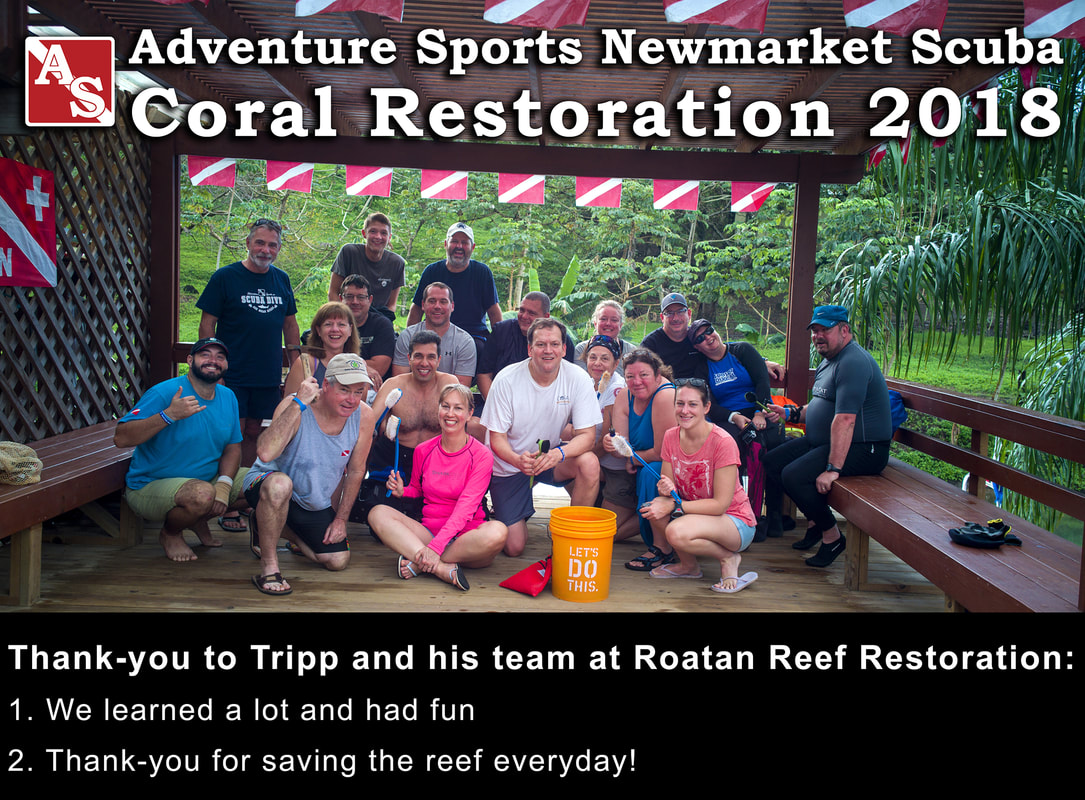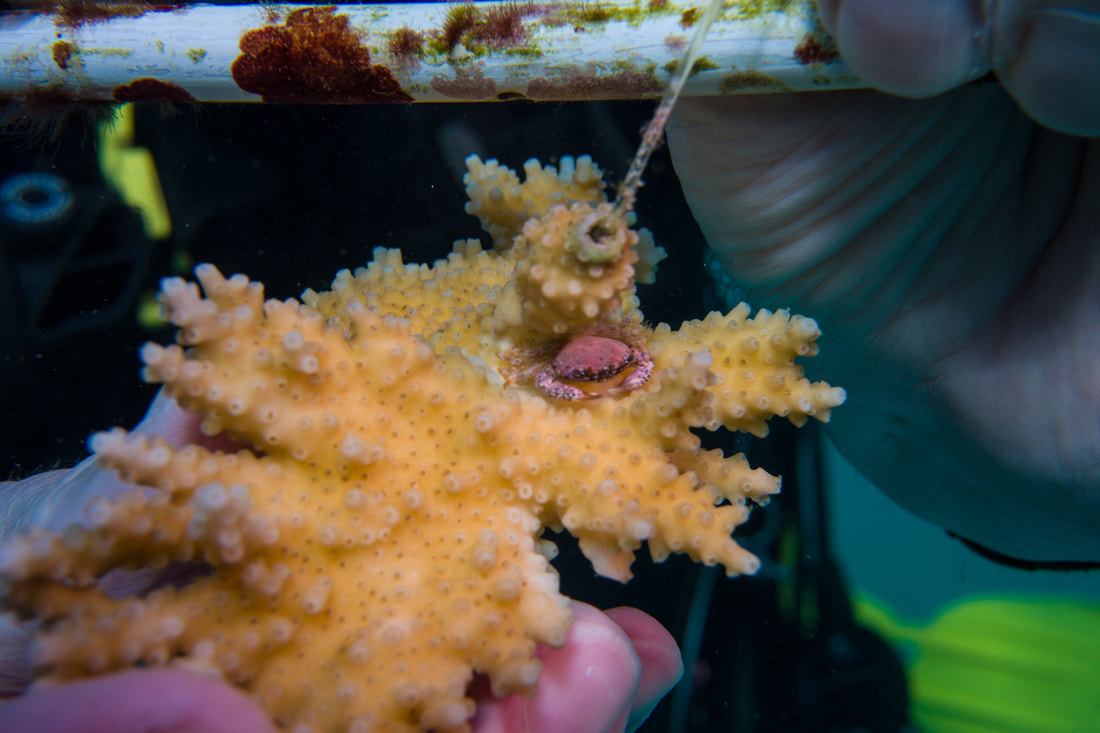 By Maddy VanCamp Maddy is a new Open Water diver this year with a passion for our oceans and our Earth; please take a moment to read her message!  Eco-conscious art by Stephania of Cancun! Children care! Eco-conscious art by Stephania of Cancun! Children care! Our world is facing one of the most serious pandemics in history: The pandemic of plastic pollution. Since the 1950’s approximately 8.3 BILLION tons of plastic have been produced worldwide. With a meager 9% of those plastics being recycled, the rest has been left on our planet to decompose, a process which can take up to a thousand years. Plastic is responsible for the death of over 1.1 million animals per year, and these numbers are growing. For the animals that do escape the fate of death by plastic, the majority will still spend a life with a stomach full of micro-plastics. And as we work our way up the food chain these micro-plastics work their way up to humans, as we consume food contaminated with plastic particles. At the rate that our society is increasing its plastic consumption, most of these statistics are set to nearly double by the year 2050.  Resuable straws - there are so many products to choose from! Resuable straws - there are so many products to choose from! This is where you come in, by making some small lifestyle changes, it isn’t too late to make our world better! Plastic straws are one of the most common single use plastics being washed up on ocean shores. This month I have teamed up with a company called “The Starfish Straw” to try and make a difference. The Starfish Straw is a company that sells reusable straws. They work to raise awareness and reduce the use of single use plastics with their products! To show their support for conservation, a portion of their profits are donated to the “Save The Sea-Turtle Foundation”. Their goal is to save marine life and our oceans from plastic pollution. The Starfish Straw company has generously provided me with the discount code “SeaSaver” that will give you 30% off of your purchases for the month of December. I’ve decided to share this code with those who cherish our beautiful planet as much as I do. If we all work together I believe we can one day go diving in an ocean that is free of plastic and garbage, and switching to reusable products like the Starfish Straw is a simple first step that can be taken towards saving our oceans.
0 Comments
by Jill Smith What a WONDERFUL day! Our Adventure Sports Newmarket Scuba team of volunteer divers had the unique opportunity to assist the Roatan Reef Restoration (RRR) Organization, and the Coral Restoration Foundation today - divers stepped up! Note: The Roatan Reef Restoration Organization is relatively new; they could use your support by liking and following their efforts on Facebook! https://www.facebook.com/RoatanReef/ Tripp Funderburk of RRR, was a great teacher and team leader today, as we wet our feet in the world of coral restoration. If you are a scuba diver, you are probably aware of the decline of reef systems around the world, and already know how important they are to the health of our Earth. Both elkhorn and staghorn corals underwent serious declines in abundance in the 1970s and 1980s, and were listed as threatened under the US Endangered Species Act in 2006. This is an issue always near and dear to a diver's heart, so having the special opportunity to participate in this program meant a lot to all of us! In March 2016, Subway Watersports and the Turquoise Bay Resort proudly began the work to install two new coral nurseries in Roatan in partnership with the Coral Restoration Foundation International (CRFI), a Florida-based non-profit organization. This morning we were briefed on how to clean the coral in the nursery, followed by harvesting the coral from the "trees" on dive 1. For dive 2, we set out to "plant" our pieces of precious cargo! We were so excited! Dive 1: We learned that the first priority was to clean algae and fire coral from the growing coral, and the second priority was to clean the strings holding them in place, followed by the tree structure itself. We were armed with scrub brushes and chisels for tough fire coral. It felt strange to be scrubbing the actual coral, and found that it is not an easy job to do! Interestingly enough, since the coral nursery is sheltered from the elements somewhat by the reef system encircling the island, we found small baby species of many types of fish hanging around the corals. A juvenile sharp-nose pufferfish the size of my pinky, fought hard to stay close to the shelter of a coral bit growing on the tree Jenn and I were cleaning (the tree was shaking with all our scrubbing). Then we noticed a tiny fish hiding beside another coral(I'm guessing a juvenile fringed filefish according to my fish ID book); we almost missed it, because it looked like a small bit of debris (which was flying everywhere with our cleaning efforts)! As Jen and I worked, Gil and Jim caught our attention and called us over to the elkhorn tree they were cleaning, to show us a very tiny elkhorn crab hanging out in a crevice of the coral. Over lunch, Jim explained he was scrubbing the elkhorn and thought it was dirt - until he realized he was chasing it all around the coral, and it was NOT dirt, but a little crab! Jim reports that the little guy is clean and free of algae now!  Harvested Staghorn coral immersed in water for transport to planting site. Harvested Staghorn coral immersed in water for transport to planting site. Dive 2: After our surface interval, and a lively debriefing, we headed out to an area of the reef where the foundation planned to restore staghorn growth. The parent coral had been harvested from its natural habitat at about 40 feet, the pieces had been growing in the nursery at about 20 feet, so the plan was to "plant" them at about 30 feet, and hope they continue to grow. The program has seen a lot of success. We were divided into 3 teams to work together to plant the corals in groups the size of a hoola hoop. We were armed with hammers and chisels. The idea is to find a place where the new coral seems to rest easily with natural stability, and at least 3 points of contact on the reef. Then we carefully chiselled and scraped away the coral in that section (about the size of an Oreo cookie) - this felt extremely wrong, because as you know, we try so very hard not to touch or disturb the reef, but it is important to clean an area at the point of contact so that the special epoxy used will stick and hold. We used a dollop of epoxy about the size of a Hershey's kiss to "glue" the coral points of contact to the reef.  Planting staghorn at the site. Can you see the blue head wrasse and rainbow wrasse interested in what we are doingÉ Planting staghorn at the site. Can you see the blue head wrasse and rainbow wrasse interested in what we are doingÉ It was very amusing to watch the behaviour of the resident fish on the reef we were working on. Little Rainbow wrasses and Blue headed wrasses were almost in our way as we worked. I guess the cloud of stuff that churns up as we chisel contains a great deal of food for them. They seemed pretty happy and excited about our work. The damsel fish, however, was very angry. We were building near its house, and it was mad about it. After our team planted the last bit of coral for our section, we were observing our handiwork (semi) proudly, and didn't that little stinker come out of its hole, all aggressive-like, knock one of our corals over, and dart back in its hole! But we did it! We did a small thing to help our ocean, and it was THE. BEST. DAY. EVER! Group Flickr Album By Jill Smith  Sea Turtle nursery - Each nest is labelled Sea Turtle nursery - Each nest is labelled While we were in Cancun this July for our annual whale shark swim, we experienced something new, wonderful, and unexpected! We did not realize that the eastern facing beach in Cancun where our resort (the Golden Parnassus) was located, had a sea turtle conservation program working in full swing due to the high volume of mama tortugas (turtles) coming onto the beach at night to lay their precious eggs. Nearly all species of sea turtles are labelled as endangered; without the help of the resorts who gladly participate in sea turtle conservation program (the Mexican people love their ocean, and are so happy to help their marine wildlife), these nests might otherwise be destroyed. While unintentional, tourist life on the beach is a hazard to the survival of these nests (think about beach volleyball, tractors raking and grooming the beaches every day, etc), not to mention the natural hazards of land and sea-bird predators. We did wake up one morning to find that a sea turtle had nested in the middle of the volleyball court during the night, leaving a fairly deep 3 foot in diametre hole. Adorable!  We got to watch this nest hatch We got to watch this nest hatch Many resorts along this strip, including our own, had fenced nurseries, where they re-bury the eggs after mama has laid them. They are protected from foot traffic and predators, and each nest is labelled with the date the eggs were laid, the species of turtle, and number of eggs. We saw nests posted of eggs from Caguama tortugas (loggerhead), Blanca (white sea-turtle), and Chelonia mydas (green sea-turtle). It’s wonderful to see this effort on the turtles’ behalf. Jody and I had lots of questions for the lifeguard, who participates in the program. He was very patient to answer them all, and actually, I think they are just as interested and happy to share. A little later, he approached me, and asked, “Would you like to see a nest of white baby sea-turtles hatching?” “Ummmmmm let me think… DOES A WHALE SHIT IN THE OCEAN??? HELL YES!!!” He advised us to meet him by the nursery in 20 minutes. I wasn’t letting him out of my sight though, so I stalked him back to the nesting area. We were SOOOOOOO excited, I can’t even tell you! WOW! OH BOY OH BOY OH BOY! Reading the plaque, I could see that the eggs were laid on June 1st. It was now July 21st - 50 days have passed. The lifeguard starts digging down, very gently, and soon, we catch the first glimpse of a turtle fin! I asked why they don’t allow them to dig out on their own when they are ready, but he says, they want to collect them, keep them safe, and release them when the pelicans and sea-birds aren’t a threat (just after dark). And soon the hole is erupting with all of these wiggly, beautiful, perfect little sea-turtles! Even the markings on their faces are already there. Collected in a sandy basket, we had to wait a couple of hours for the sun to go down, and then we took them to the ocean to let them go. Part of me didn’t want to release them, because I know most of them are facing certain death out there (maybe only 10% will survive), but that is the nature of things… Hopefully they have been given their best chance! But that’s not all. After dinner, around 10:30, Jody and I go for a walk on the beach, and don’t we come across a mama loggerhead sea-turtle making her way up the beach to find a place to lay her eggs. Seriously, how amazingly crazy is that? I thought my head would pop off from the shear excitement of it all. We stayed well back, and sat on a beach chair to observe quietly from a distance. The conservation guy (Fernando) was also there, standing back to observe, so we got to whisper our questions to him. We couldn’t take pictures, because flashes and lights will scare a mama back into the ocean before she has laid her eggs, so we could only squint and watch in the dark.  Jody holds two delicate turtle eggs in his gloved hand Jody holds two delicate turtle eggs in his gloved hand It took her a little while to decide where she wanted to nest, but she finally decided that under the lifeguard station was a good spot. Her powerful front fins can really throw sand! We saw sand flying several feet into the air as she dug a bed for herself. Soon, she was so deep in the hole that she was just below the sand surface. That is when she starts scooping out a hole with her back fins. Fernando says that her back fins can scoop much like our hands can (cupped). After the sand was no longer flying, and she was still and quiet, he said, “Come with me, we are going to check her now. Quietly.” OHMYGOSH!!! He and his colleague used red lights to see, as this is the least disturbing to mama turtle. Fernando handed Jody a pair of gloves to wear to help collect the eggs, while I took pictures the best I could in the darkness. I got to stroke her shell; Oh my gosh I love her. A mama sea-turtle can lay 50-200 eggs at a time, though we were carefully collecting them and placing them in a bucket for re-burying, and did not count them at that time. Presumably they are counted as they are placed in the new nest. We thanked Fernando and started walking back to our resort, and we came across several large holes in the sand, and there was even another mama turtle in one of them! Jody ran back to tell Fernando, and he came with a flag to mark the spot so they could retrieve them later. There were still more sea turtles coming up onto the beach to lay…so many! What an experience! Best day ever! Bravo to the Mexican Conservation Authority and the Resorts that are invested in this program! Let's hope that the efforts made today make the sea turtle populations and oceans healthier tomorrow. |
FlickrAlbumAuthorsJill Smith Archives
January 2024
Categories
All
|
Our Services |
Company |
SupportOur Blog
|
|
Copyright © 2014
|
Newmarket, ON
|
(905) 898 5338
|























 RSS Feed
RSS Feed

